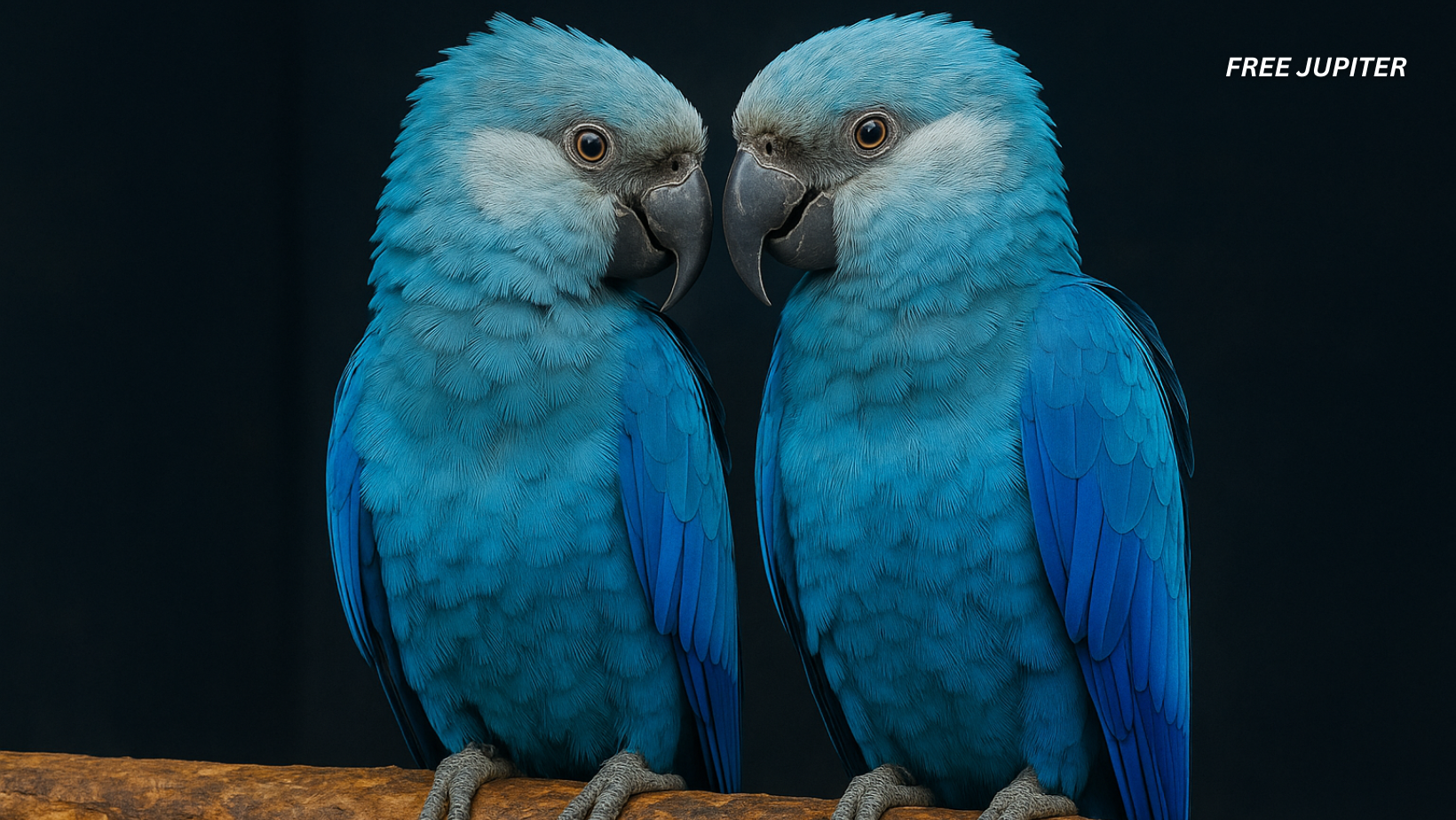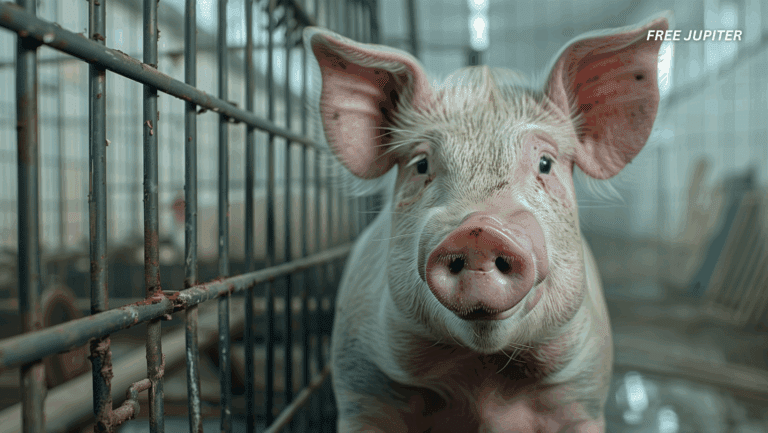Once upon a time, in the semi-arid landscapes of northeastern Brazil, a shimmering blue parrot lived quietly among the thorny shrubs and twisted trees of the Caatinga forest. Known as the Spix’s Macaw—or affectionately the “Little Blue Macaw”—this bird became a global symbol of both loss and resilience. Declared extinct in the wild at the turn of the millennium, it was mourned as one of the many casualties of habitat destruction and illegal wildlife trade.
But today, against all odds, the Spix’s Macaw is making a comeback. Thanks to an extraordinary coalition of scientists, conservationists, local communities, and even a museum thousands of miles away in Berlin, this parrot’s story is no longer just about extinction—it is about rebirth.
A Bird That Became a Legend
The Spix’s Macaw (Cyanopsitta spixii) isn’t just another parrot. Its delicate pastel-blue plumage and graceful flight earned it a mythical reputation long before Hollywood brought it into the spotlight. The animated movie Rio may have introduced it to millions, but in conservation circles, the bird had long been both a heartbreak and a challenge.
By the year 2000, the last known wild Spix’s Macaw vanished, leaving only captive birds scattered across the world. Conservationists were devastated. With fewer than 200 birds left in aviaries and private collections, many feared that the Spix’s Macaw was destined to be remembered only in films, books, and photographs.
Yet the bird’s story did not end there. It was simply waiting for the right cast of characters to step in.
Read more: Humpback Whales Keep Saving Animals From Orcas—And No One Knows Why
Berlin’s Hidden Treasures
Thousands of kilometers away from Brazil, the Museum für Naturkunde Berlin quietly holds two preserved Spix’s Macaw specimens—rare, fragile reminders of a species nearly lost. These specimens are not just display pieces. They are invaluable tools for science, allowing researchers to study the bird’s biology, genetics, and history.
When the museum renewed its partnership with the Association for the Conservation of Threatened Parrots (ACTP), it wasn’t simply renewing paperwork. It was reaffirming its role in one of the boldest comeback stories in modern conservation.
Breeding Hope: A Global Network of Parrot Matchmakers
Saving a species with only a couple hundred individuals left requires precision, patience, and quite a bit of matchmaking. Breeding programs for Spix’s Macaws have been meticulously planned to preserve genetic diversity. Every pairing is chosen with the care of arranging a royal marriage, ensuring the survival of strong, healthy bloodlines.
This effort is global. Aviaries across Europe, the Middle East, and South America are part of a carefully coordinated breeding network. Each chick hatched is a victory—not just for the species, but for the possibility of seeing these birds free again in the wild.
In Brazil, the national biodiversity agency ICMBio created the Spix’s Macaw Action Plan, a detailed roadmap for the bird’s return. Meanwhile, ACTP launched the Release Project, preparing hand-reared birds for life outside captivity. This involves everything from flight training to predator awareness—skills captive birds must relearn before facing the wild.
A Historic Release
The turning point came in 2020, when more than 50 captive-bred macaws were transported to Curaçá in Brazil’s Caatinga region. This was not just a symbolic release; it was a carefully designed reintroduction into the very ecosystem their ancestors once inhabited.
Imagine the scene: after decades of absence, the skies of northeastern Brazil shimmered once again with flashes of bright blue feathers. For local communities and conservationists, it was nothing short of historic.
Read more: Wildlife Experts Warn: Never Release These 17 Animals Into the Wild
Beyond the Bird: Healing the Land and Empowering People
What makes the Spix’s Macaw project truly groundbreaking is that it recognizes a simple truth: you cannot save a species without saving its home.
The Caatinga, a unique dry forest ecosystem found only in Brazil, has been heavily degraded by farming, logging, and climate change. Restoring this habitat is essential not only for the macaw but also for countless other species that share the land.
To achieve this, conservationists transformed a former farm in Curaçá into a conservation sanctuary. Here, habitat restoration projects, organic farming, and eco-friendly practices go hand in hand. This isn’t just about planting trees—it’s about creating a sustainable balance between human needs and wildlife survival.
Local people are not passive bystanders in this story—they are central players. More than 7,500 schoolchildren have taken part in environmental education programs, learning firsthand the importance of protecting the Spix’s Macaw and its habitat. Adults, too, benefit from eco-agriculture initiatives that provide new sources of income while reducing pressure on the forest.
The message is clear: when people thrive, nature can too.
Why the Spix’s Macaw Matters
Skeptics might ask: why pour so many resources into saving one bird? The answer lies in what the Spix’s Macaw represents.
- A Symbol of Hope: In a time when headlines about biodiversity loss are overwhelming, the revival of a species once declared extinct in the wild proves that conservation works.
- An Umbrella Effect: Protecting the macaw’s habitat helps countless other species in the Caatinga, from rare plants to mammals and reptiles.
- A Human Connection: The bird’s global fame, boosted by popular culture, has helped raise awareness about conservation in ways few other animals could.
In short, saving the Spix’s Macaw is about much more than saving a parrot. It is about proving that extinction is not always irreversible.
The Challenges Ahead
Of course, the road to recovery is far from smooth. The newly released birds face natural predators, disease risks, and the uncertainty of adapting to wild conditions after generations in captivity. On top of this, the Caatinga ecosystem remains vulnerable to climate change and human activities.
The wild population is still tiny, and experts caution that success cannot be measured by a few years of progress. Long-term monitoring, community involvement, and international funding will all be needed to ensure the species’ survival.
A Global Collaboration
The Spix’s Macaw comeback is not the work of a single organization or country—it is a patchwork quilt stitched together by many hands. From Berlin’s museum specimens to Brazil’s conservation stations, from European breeding centers to local schoolchildren in Curaçá, the effort spans continents and generations.
It is a reminder that conservation is rarely a quick fix. It is slow, patient work that requires trust, cooperation, and persistence.
Read more: Grandma Elephant Pauses to Thank Drivers for Letting Herd Cross The Road Safely
A Story That Inspires
Today, the Spix’s Macaw is not just a bird. It is a living metaphor for resilience, unity, and the possibility of second chances. Its shimmering blue feathers now serve as a beacon for conservation projects worldwide, showing that even when a species seems lost, hope can still take flight.
Once a tragic symbol of extinction, the “Little Blue Macaw” is now soaring back into its native skies. Its return is a reminder that humans have the power not only to cause destruction—but also to repair it.
Featured image: GPT-5o Recreation
Friendly Note: FreeJupiter.com shares general information for curious minds. Please fact-check all claims and double-check health info with a qualified professional. 🌱










